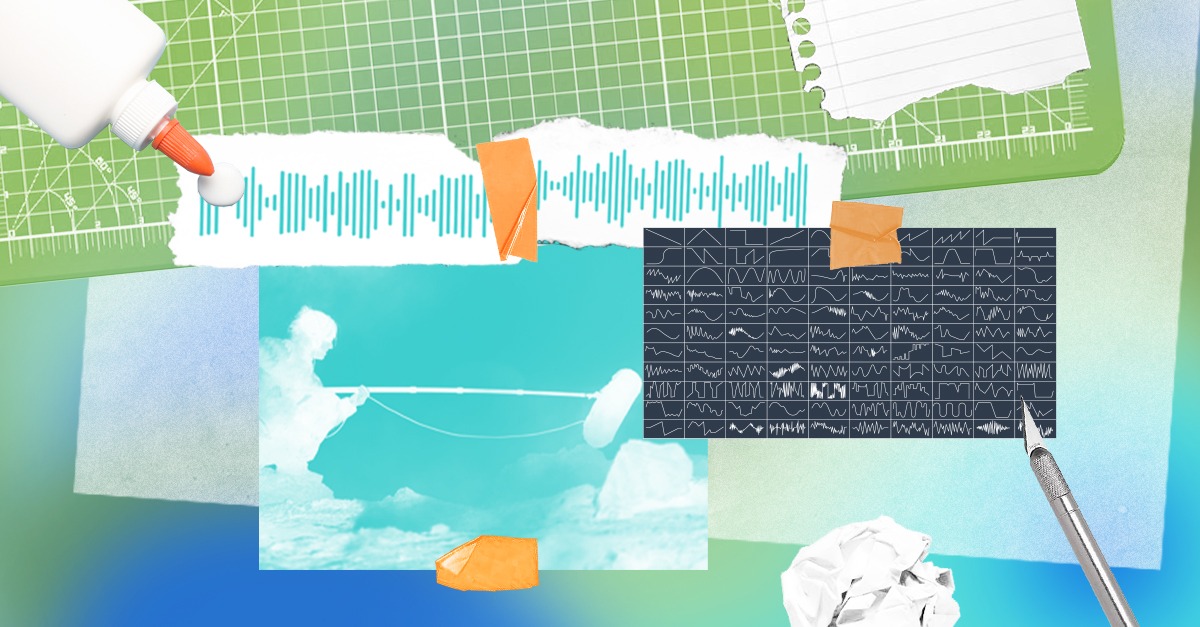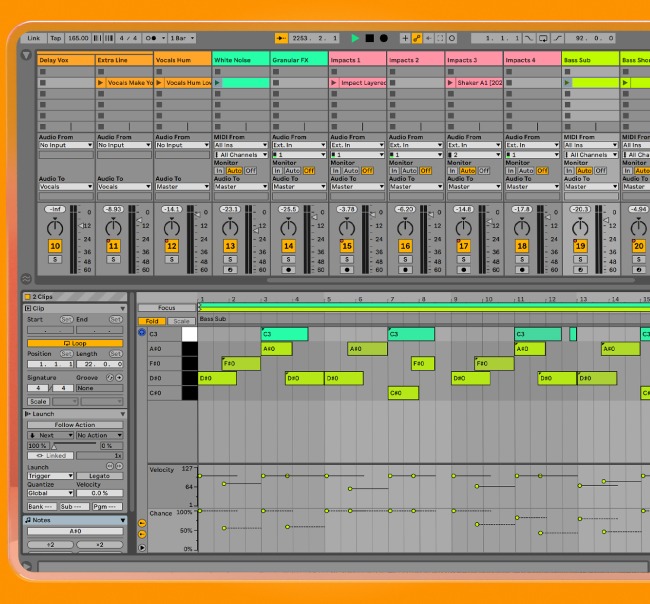
What is a Sound Designer? Careers in Sound Design Explained

Sound is an integral part of our daily lives. It surrounds us, evokes emotions, and communicates meaning. That’s why sound designers play a critical role in enhancing our experiences, from movies and TV shows to video games and theatre productions.
But who creates these sounds, and what does it take to succeed?
Whether you are interested in jobs in film, theatre, video games, or other industries, there are plenty of opportunities to pursue a career in sound design.
In this article, we will explore the basics of sound design, the skills required to become a successful sound designer, the responsibilities of one and the job opportunities and salary expectations in this exciting field.
We will also discuss some famous sound designers and their notable projects, and provide tips for those interested in pursuing a career in sound design.
What is sound design?
Sound design is the art of creating and manipulating sound to enhance the overall experience of a media production, such as films, television shows, video games, and theater productions. Sound designers are responsible for creating, editing, and integrating various sound elements, such as music, dialogue, sound effects, and Foley sounds.
In the film industry, sound design plays a crucial role in creating a believable and immersive environment for the audience.
It involves using techniques, such as sound editing and mixing, to make sure that the sound effects match the visuals and enhance the narrative of the story.
Similarly, in the theatre industry, sound design is used to create an immersive experience for the audience, where sound is used to create a sense of space and atmosphere.
Sound designers work closely with directors, actors, and other creative professionals to ensure that the audio elements of a production complement and enhance the story being told.
To become a successful sound designer, one must have a combination of technical and creative skills.
These include knowledge of audio recording and editing software, familiarity with musical concepts, and an ability to think creatively to create and manipulate sound.

How to become a sound designer
Here are some steps you can take to get started on your sound design career.
Develop Your Skills
The first step to becoming a sound designer is to develop the necessary technical and creative skills.
You can start by learning about the different aspects of sound design, such as music composition, sound editing, and mixing.
There are plenty of online resources, tutorials, and courses available to help you develop your skills.
Build a Portfolio
To attract potential clients or employers, you’ll need a portfolio of your work. One way to build your portfolio is by creating SFX and soundtracks for short films, animations, or video games.
You can also contact local theaters or student film productions to offer your services and build your portfolio.
Network with other professionals
Building connections in the industry is essential to getting your foot in the door.
Attend industry events, join online communities, and connect with other sound designers and media professionals on social media.
Find internships or entry-level jobs
Internships or entry-level jobs can be a great way to gain practical experience and learn from experienced professionals in the industry.
Many media production companies, studios, and theaters offer internships or entry-level positions for sound designers.
Keep learning
The media production industry is constantly evolving, so it’s important to stay up-to-date with the latest trends and technologies in sound design.
Attend workshops, conferences, and courses to learn about new techniques and software.
By following these steps, you can develop your skills, build your portfolio, and establish yourself as a professional sound designer in the industry.

Here`s a fun sound design tip from LANDR`s own, Sung Production
Responsibilities of a sound designer
Sound designers play a crucial role in creating immersive and engaging media experiences. Here are four of the most important responsibilities of a sound designer:
1. Creating Sound Effects
Sound designers are responsible for creating and selecting sound effects that bring the visual elements of a project to life.
This includes creating original sounds, recording and editing existing sounds, and manipulating them to fit the project’s needs.
2. Mixing Sound
Mixing is the process of blending different audio tracks together to create a cohesive and balanced sound design.
Sound designers must have a keen ear for detail to adjust volume, balance, and frequency levels to ensure that each element is audible and works together seamlessly.
3. Composing Music
In addition to sound effects, sound designers may also compose original music or collaborate with composers to create a score that complements the visuals and enhances the emotional impact of a project.
4. Working with the Creative Team
Sound designers work closely with other members of the creative team, such as directors, producers, and editors, to ensure that the sounds meet the project’s vision and goals.
They must also be able to communicate their ideas and concepts effectively to the team and be open to feedback and revisions.
Overall, they are responsible for creating an auditory experience that enhances and elevates the visuals of a project.
Famous sound designers and their gear
Many famous sound designers have had a significant impact on the industry, shaping the way we perceive sound and enhancing our audio experience.
One notable sound designer is Hans Zimmer, who has worked on numerous films such as The Lion King, Pirates of the Caribbean, and Inception.
Zimmer is known for his signature sounds and techniques, such as his use of synthesizers and orchestral arrangements.
His work often combines electronic and acoustic elements, creating a unique and recognizable sound.
Other famous sound designers include Ben Burtt, who worked on the Star Wars franchise and is known for creating iconic sound effects like lightsabers and blasters, and Randy Thom, who worked on films like The Incredibles and Forrest Gump.
In terms of software, Digital Audio Workstations (DAWs) like Pro Tools and Logic Pro are widely used in sound design, while plugins like Arturia’s Analog Lab and IK Multimedia’s SampleTank are popular for creating specific effects.
It’s important to note that while gear is an important tool for sound designers, it’s not the only factor in creating great sound design. Your skills and creativity are just as crucial for producing high-quality audio.
Starting your sound designer journey
Starting out as a sound designer can be daunting, but there are steps you can take to jumpstart your journey in this exciting field.
Learn the Basics
Before diving into sound design, it’s essential to understand the basics of audio production.
Familiarize yourself with digital audio workstations (DAWs), plugins, and other tools commonly used in sound design.
There are many online courses and tutorials available that can teach you the fundamentals of audio production.
Invest in Tools and Software
The right tools and software can make a huge difference in your sound design work. Invest in a quality DAW, plugins, and other software that can help you create the sounds you envision.
Explore Sound Design Resources
There are many resources available to help you learn and improve your sound design skills. Online courses, tutorials, and forums are great places to start.
You can also explore sample libraries and sound effects packs to expand your sound palette.
By taking these steps, you can start your journey and begin creating unique and compelling sounds for a variety of media.
Start designing sound
Sound design is a crucial aspect of the entertainment industry, spanning film, theatre, video games, and more.
In this article, we explored the world of sound design, looking at what designers do, the skills needed for the job, and their potential earnings.
If you’re interested in pursuing a career in sound design, there are several resources available to help you get started.
Learning the basics of audio production, networking with industry professionals, and exploring various software and tools used in sound design are all important steps to take.
Resources such as online courses and tutorials can also provide valuable guidance for those looking to learn more about the field.
Sound design can be a highly rewarding career choice for those with a passion for audio and a willingness to learn.
With the right skills and dedication, you can make a name for yourself in the industry and bring their creative visions to life through sound.
Gear guides, tips, tutorials, inspiration and more—delivered weekly.
Keep up with the LANDR Blog.







